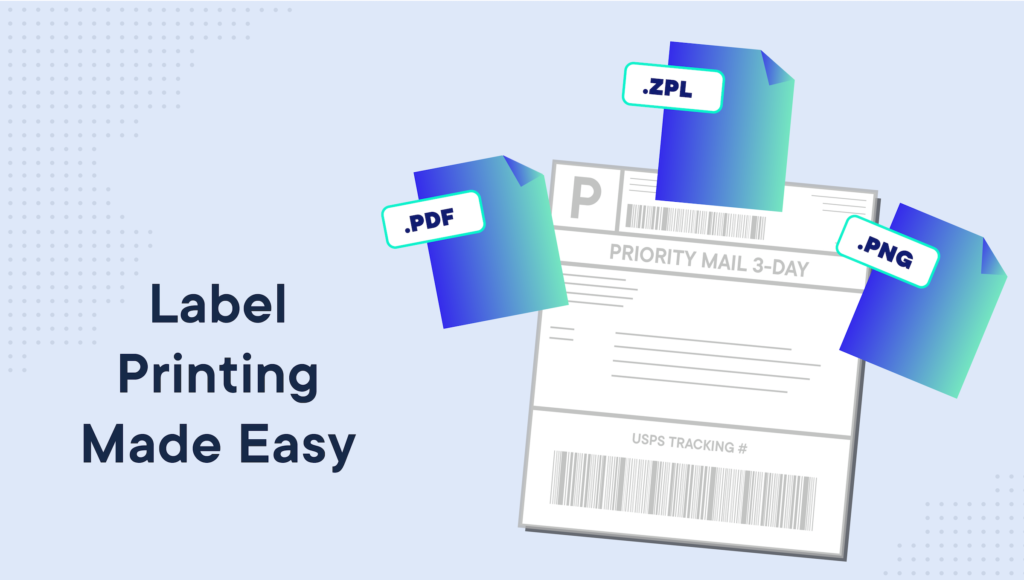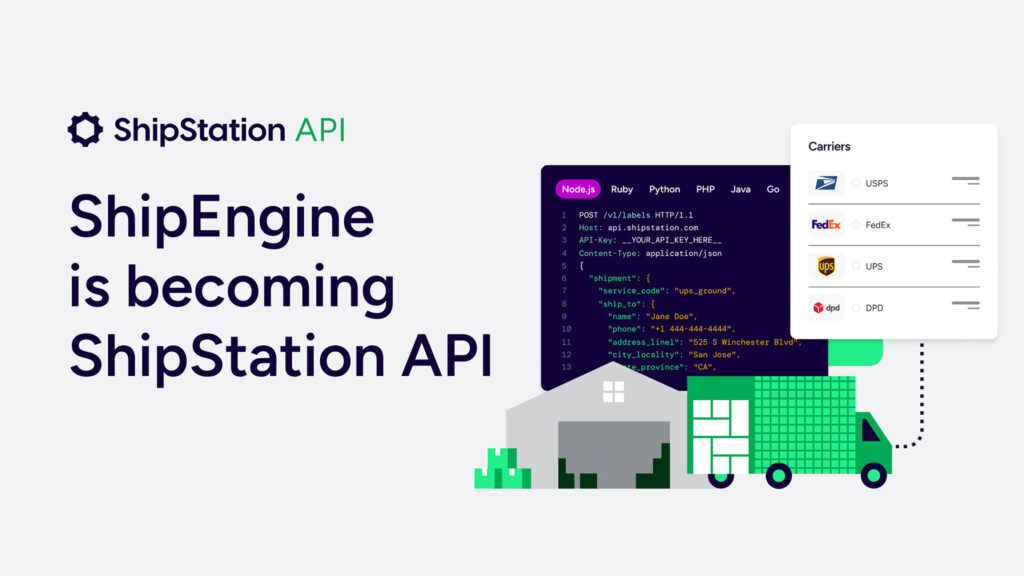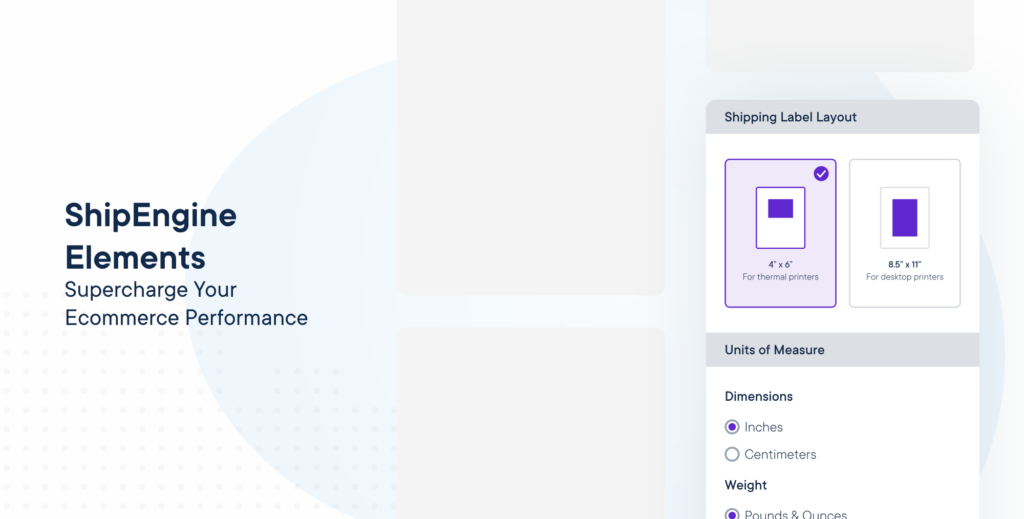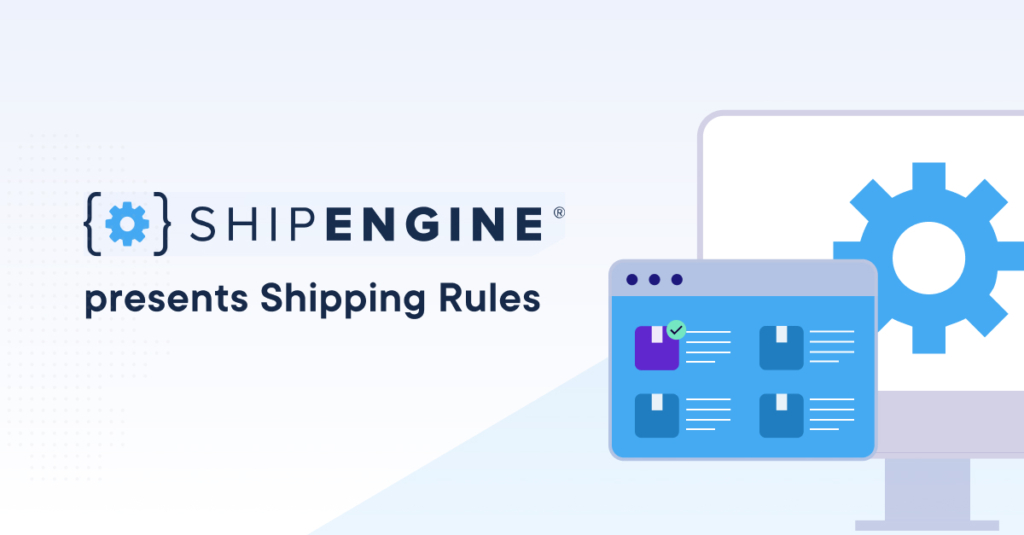Label Printing Made Easy with 3 Interchangeable File Formats

At ShipEngine, it’s our goal to give you everything you need to solve even the simplest shipping logistics issue. That is why we’ve introduced a new feature that allows users—merchants or shoppers (making returns)—to access any label, any courier, any time, in the three most established shipping label file formats: png, zpl and pdf.
What makes interchangeable shipping label file formats so groundbreaking?
There are currently two issues shippers encounter when generating and printing their labels:
1. No Easy Way to Convert From Format to Format
If a user preprints return labels in a particular file format, say PNG, to include in the package upon arrival … but then the shopper emails later requesting a new return label that they can easily print as a PDF using their inkjet printer … there are few carriers and platforms that allow you to switch the file format mid-way. The fix to this—up until now—has been for businesses to generate a completely new label from scratch, therefore duplicating their labor and label costs.
2. No One “Right Way” to Generate Labels
Businesses have been unnecessarily restricted by the whims of others, and their preference to include or exclude certain supported shipping label file formats. If you rely on a Zebra thermal printer to accommodate the high volume of labels you print every day, and a certain carrier/WMS/business-management platform doesn’t support zpl shipping labels, you’re likely to have to make a sacrifice somewhere. It may mean extra effort spent printing labels so that you can integrate with preferred carriers, or it could mean limiting yourself to a smaller list of compatible carriers, which can end up being a costly decision.
ShipEngine still stores your generated labels as a pdf by default, but now you have the option to (on the fly and at your convenience) convert your labels into a zpl or png, whether or not the carrier supports this format as well.
Key benefits:
- Access more carrier choices—no matter your printer, process, or need
- Fewer labels to void and re-create
- Choice of formats for shoppers, resulting in fewer support requests
- Multi-warehouse accounts no longer need to “agree” on one label format
- No need to develop in-house solution or “band-aid” fix
To make your label printing experience as easy as possible, we’ve outlined details on when and why you need each file format:
1. PDF Shipping Label
Adobe’s Portable Document Format, or PDF, is one of the more widely used file formats for shipping labels because of its widespread acceptance by carriers, and compatibility with almost all printer types.
While 4”x6” labels are the standard size for major US carriers, exporting as a PDF gives you the option to print your shipping label on A4 or letter-sized (8.5”x11”) paper. This can come in handy when using an inkjet printer, or shipping to a country that requires different-sized labels.
2. ZPL Shipping Label (Zebra Printer)
Thermal label printers can yield huge savings in terms of ink and time, which is why they’re considered one of the best options for high-volume shippers. However, over time, carriers moved away from offering a .zpl shipping label, leaving shippers to either manually convert their files or give up their printers.
With ShipEngine, it’s easier than ever to print exactly how you want to print.
3. PNG Shipping Label
Known as a Portable Network Graphic (PNG), this raster image file acts much like JPEG. It also happens to be a widely accepted file format for most other direct thermal and thermal transfer printers. If you use a Dymo Labelwriter 4XL to accommodate 4”x6” label printing, this is the format you will need to designate for your API calls.
Streamline Your API with Fewer Calls
We’ve also enabled the ability to add inline requests, creating more opportunity for efficiency within your API. This signals the API to accomplish two calls at once: creating the label, and downloading the label. If you only intend to retrieve labels in a single format, and you know ahead of time which format you will require, then you can optimize your workflow by eliminating the subsequent HTTP request that downloads the label.
This is available to all ShipEngine users, and the setup required can be referenced under “Ways to Download a Label” in our documentation.
If you’re unsure which file format will work best with your printer, the great news is: by default, ShipEngine allows you 90 days to download your labels from the URL provided in each label generation call.
Want to customize shipping labels with your branding?
Now that you can print labels in your preferred file format, why not take an extra step and customize the shipping experience for your customers?
ShipEngine is proud to offer the competitive advantage of being able to help you extend your brand presence throughout the order fulfillment process. With our branded tracking pages, you’re able to promote brand consistency and ultimately enhance the overall customer experience.
If you’re new to ShipEngine and you’d like to check out these features first-hand, we invite you to sign up for your Free API Key today and start exploring the capabilities.


